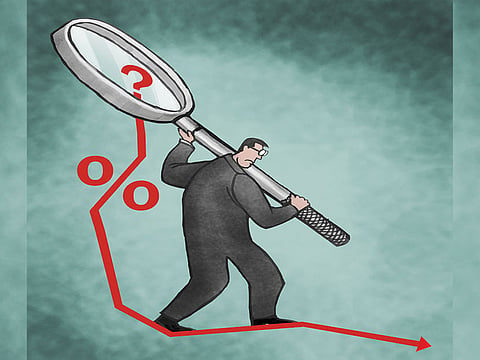The many sides to the interest rate story
With China waning, credit-fuelled boom must look for other places

Why are interest rates so low? What are the chances that they will soon rise? These questions matter not just to central bankers and financiers but also to business people, savers and the wider population.
Let us start with the facts. The intervention rates of the four most important central banks of the high-income countries — the Federal Reserve, European Central Bank, Bank of Japan and the Bank of England — are all close to zero. These rates have been extremely low since soon after the worst of the global financial crisis, in September and October 2008.
In addition, all these central banks have expanded — or, in the cases of the ECB and the BoJ, are now expanding — their balance-sheets, with a view to lowering interest rates on longer-term government bonds.
Partly as a result, long-term interest rates on conventional bonds have also fallen to extremely low levels: in mid-September 2015, yields were 0.3 per cent on 10-year Japanese government bonds; 0.7 per cent on the German bonds; 1 per cent on French bonds; 1.8 per cent on Italian and UK bonds; and 2.1 per cent on US bonds.
This is not just a story of low nominal rates. Global real interest rates on safe bonds have averaged only 2 per cent since 2000. Currently, they are not far from zero.
Ten-year US Treasury inflation-protected securities (TIPS) yielded 0.6 per cent in late September, while even 30-year TIPS yielded just 1.3 per cent. According to Andy Haldane, the Bank of England’s chief economist, these are the lowest real interest rates for 5,000 years. This is what John Maynard Keynes meant by the “euthanasia of the rentier”. Not surprisingly, rentiers hate it.
There are three big-picture explanations of the combination of highly stimulative monetary policies, ultra-low nominal and real interest rates and the absence of inflation. The first is monetary; the second is real; and the third is real, monetary and financial. This last lies at the heart of my book, ‘The Shifts and the Shocks’.
The first explanation is that of the Bank for International Settlements. As its Annual Report argues: “Rather than just reflecting the current weakness, low rates may in part have contributed to it by fuelling costly financial booms and busts. The result is too much debt, too little growth and excessively low interest rates. In short, low rates beget lower rates.”
The objection to this view is that it rests on the assumption that monetary policy is able to distort long-term interest rates — among the most important of all prices — for decades. It rests, too, on the assumption that pursuing such ultra-easy policies will show up not at all in inflationary pressure, but exclusively in the behaviour of the financial system. This seems wildly implausible.
At the heart of the second explanation lie shifts in the desire to save and invest. This is the”savings glut” hypothesis of Ben Bernanke, former chairman of the Federal Reserve. Haldane elaborates this hypothesis as “excess savings in the east, deficient investment in the west, worsening demographic trends and rising inequality”.
The difficulty with this analysis is that it gives no explanation for the financial crisis. If one holds to this explanation, one has to argue that the crisis was just the result of foolish deregulation and wild profit-seeking in an irresponsible financial sector. That, too, seems implausible. The question has to be: why did such a huge crisis happen just when it did?
The third (and, in my view, correct) explanation is a synthesis of the other two. The simplest form of that synthesis is the Keynesian view: the short-run equilibrium in the economy is determined by the intersection of real and monetary forces. The former determines equilibrium (or natural) interest rates, which the central bank then seeks to deliver.
Yet, in seeking to deliver the monetary conditions needed for equilibrium between savings and investment at high levels of activity, the central bank has to encourage credit growth. But that credit growth might be — and in recent decades has been — highly destabilising, because it requires massive leveraging, particularly of property assets, and leads to financial booms and busts.
The correct story, then, is of the interaction between real forces on the one hand, and monetary and financial forces on the other. The savings glut was a causal factor. But its impact came via monetary policy and the financial system, and so via financial booms and busts.
So what does this view imply for the future of world interest rates? Here are five implications.
* First, people feel that savings have to be valuable. On average, they are. But at the margin, they are not. And the price of anything is decided at the margin. In this case, it is zero.
* Second, the bursting of the credit bubble in the high-income economies led to another huge credit bubble, this time in China.
* Third, after the end of the Chinese bubble, the global savings glut is likely to grow in coming years. China has a national savings rate not far short of 50 per cent of gross domestic product. But its investment rate (which is almost as high) seems sure to fall.
* Fourth, the debt overhangs created by the western and subsequent Chinese credit booms have been large enough to constrain spending for a long time.
* Finally, for strong global growth, we would seem to need another credit boom somewhere. But where might that happen?
The obvious candidate for another such boom would be the US. If so, weak global demand is likely to keep US interest rates very low.
Financial Times
Sign up for the Daily Briefing
Get the latest news and updates straight to your inbox

